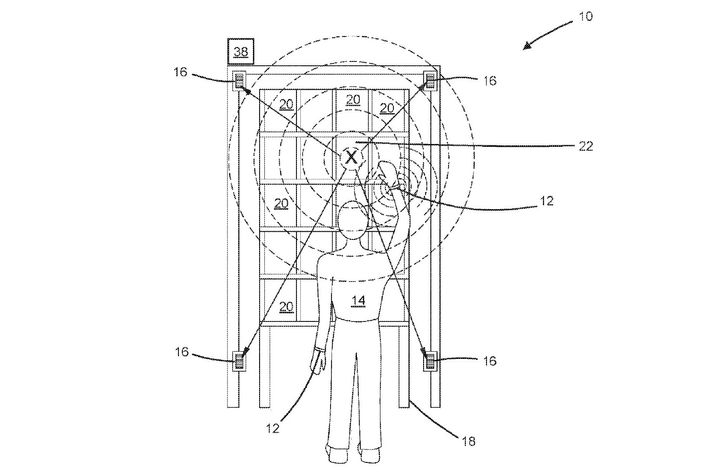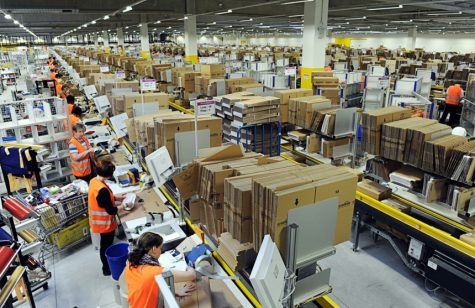Global electronic commerce company Amazon has patented an employee-tracking wristband that will allow them to see an employee’s every movement- from minuscule twitches to bathroom breaks.

The Wristbands
Amazon originally submitted the wristband patents two years ago and published the patents to the public January 31, 2018. The patent describes the wristbands as technology that release ultrasonic pulses and radio transmissions in order to track employee’s hand movements.
The wristband would serve for the employee to scan and sort objects. It would give employees haptic feedback, or vibrations, to steer their hand toward the correct bin. The wristband would also administer this feedback if the employee took too long to do specific tasks. The wristbands would also act as an anti-theft measure.
Amazon claims that the wristbands would improve flow in the workplace, as it would lessen the time it takes to store and stock items. They pitch the wristband as a piece of technology that will become vital to the workplace, if not completely necessary. It will keep track of employees, inventory, and everything in between.
Controversy
However, these wristbands have sparked controversy among many. Many people believe that the wristbands are an invasion of privacy. The wristbands will track every single action the employee makes with their hand. These actions will range from bathroom breaks to how long it takes for an employee to finish a task. Amazon could fire employees due to the data obtained from the bracelets.
The bracelets would put unnecessary stress on employees. Employees would feel pressured to complete tasks faster, finish breaks faster, sit down less, use the bathroom less. The bracelets would ultimately strip employees of their humanity with the pressure they impart.
Critics further comment on the haptic feedback- they note that the haptic feedback eerily resembles a shock collar. Critics question the humanity of the vibrations.
An Amazon spokesperson released this statement to news-sources, such as CNN:
“The speculation about this patent is misguided. Every day at companies around the world, employees use handheld scanners to check inventory and fulfill orders. This idea, if implemented in the future, would improve the process for our fulfillment associates. By moving equipment to associates’ wrists, we could free up their hands from scanners and their eyes from computer screens. Like most companies, we have performance expectations for every Amazon employee and we measure actual performance against those expectations, and they are not designed to track employees or limit their abilities to take breaks.”
 Photo Credit: Photo via acctivate.com under creative commons license
Photo Credit: Photo via acctivate.com under creative commons license
However, Amazon had no comment on whether or not the wristbands are actually in development. They also had no further comment on the haptic feedback.
Amazon’s history of mistreating employees
Past this patent, Amazon has a long history of mistreating their employees.
Employees have complained about the workplace culture for years. Management is strict, and employees have very little time for breaks. Management discourages employees from sitting on the job, even with 10-hour shifts. Employees are forced to time their bathroom breaks, and aren’t allowed to exceed an allotted amount of time. Workers fall asleep on their feet due to the stress put on them.
Furthermore, two workers have died in an Amazon warehouse due to unsafe workplace practices that management pushes. Working conditions in these warehouses are brutal. Employees aren’t treated as people, and instead are treated as minuscule workmen.
Former Amazon employee Max Crawford comments to NY Times, “After a year working on the floor, I felt like I had become a version of the robots I was working with.”
Starting wages working in an Amazon workhouse average to $11 an hour. In contrast, the starting wage for most other warehouses averages to $13.50 an hour. Through this direct comparison, the way Amazon treats their employees is grossly unjustifiable.
All in all, Amazon‘s treatment of workers pushes the limits. They treat their warehouse workers in a way that is cruel and inhumane, and don’t even pay extra for the suffering.
—
If you’re interested in this topic, here is some recommended further reading:
The Mirror UK – Timed toilet breaks… workers falling asleep on feet: Brutal life working in Amazon warehouse
Business Insider – These Are The Sarcastic Things Amazon‘s Jeff Bezos Tells Employees When He Gets Angry
LA Times – Amazon‘s brutal workplace is an indicator of an inhumane economy










